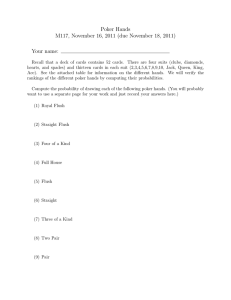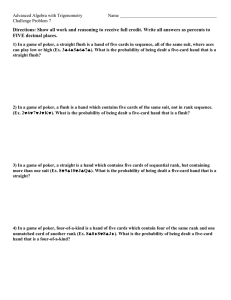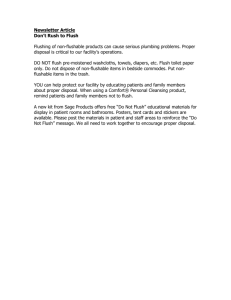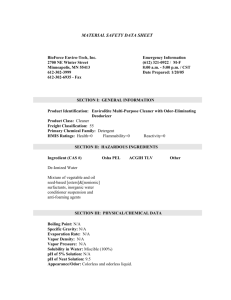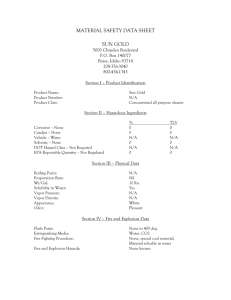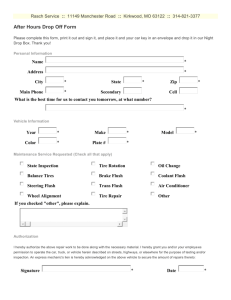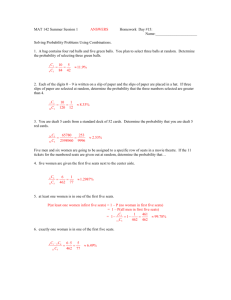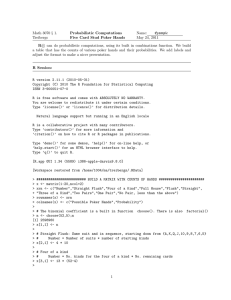Fall 2014, Math 302.504 Final Exam - Review Sheet Name:
advertisement
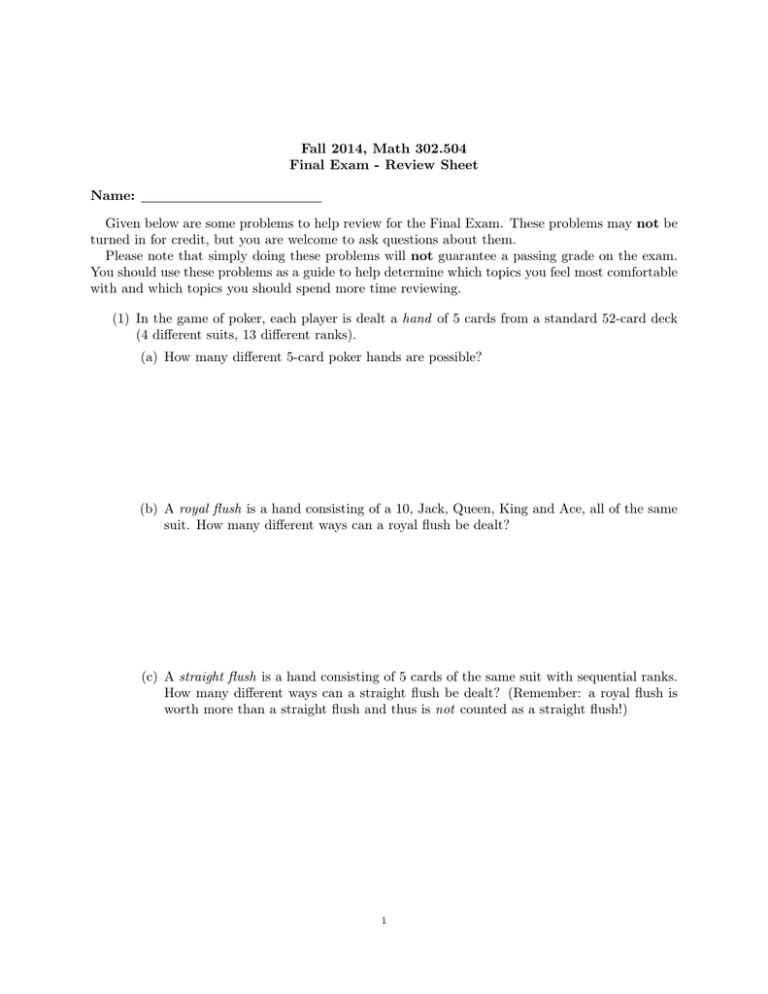
Fall 2014, Math 302.504 Final Exam - Review Sheet Name: Given below are some problems to help review for the Final Exam. These problems may not be turned in for credit, but you are welcome to ask questions about them. Please note that simply doing these problems will not guarantee a passing grade on the exam. You should use these problems as a guide to help determine which topics you feel most comfortable with and which topics you should spend more time reviewing. (1) In the game of poker, each player is dealt a hand of 5 cards from a standard 52-card deck (4 different suits, 13 different ranks). (a) How many different 5-card poker hands are possible? (b) A royal flush is a hand consisting of a 10, Jack, Queen, King and Ace, all of the same suit. How many different ways can a royal flush be dealt? (c) A straight flush is a hand consisting of 5 cards of the same suit with sequential ranks. How many different ways can a straight flush be dealt? (Remember: a royal flush is worth more than a straight flush and thus is not counted as a straight flush!) 1 2 (d) A 4-of-a-kind is a hand containing 4 cards with the same rank. How many different ways can a 4-of-a-kind be dealt? (e) A straight is a hand consisting of 5 cards of sequential ranks. How many different ways can a straight be dealt? (f) A flush is a hand consisting of 5 cards of the same suit. How many different ways can a flush be dealt? Those familiar with the game of poker (or access to the wikipedia page) are encouraged to continue with the remaining possible hands. Be warned: these can get quite tricky. 3 (2) Prove the hexagon identity n−1 n n+1 n−1 n n+1 = k−1 k+1 k k k−1 k+1 using algebraic manipulation. (3) Give a combinatorial proof that if n is a positive integer, then n X 2 n k = n(n − 1)2n−2 + n2n−1 k k=0 Hint: Show that both sides count the ways to select a subset of a set of n elements together with two not necessarily distinct elements from this subset. 4 (4) Find the general solution to each of the following recurrence relations. If initial values are given, find the solution with those initial values. (a) an = 2an−1 + 5an−2 − 6an−3 . Hint: 1 is a root to the characteristic polynomial. (b) an = 8an−2 − 16an−4 . 5 (c) an = 3an−1 + 2n , a0 = 1. (d) an = 8an−2 − 16an−4 + n2 + n. Hint: look at part (b) above.
